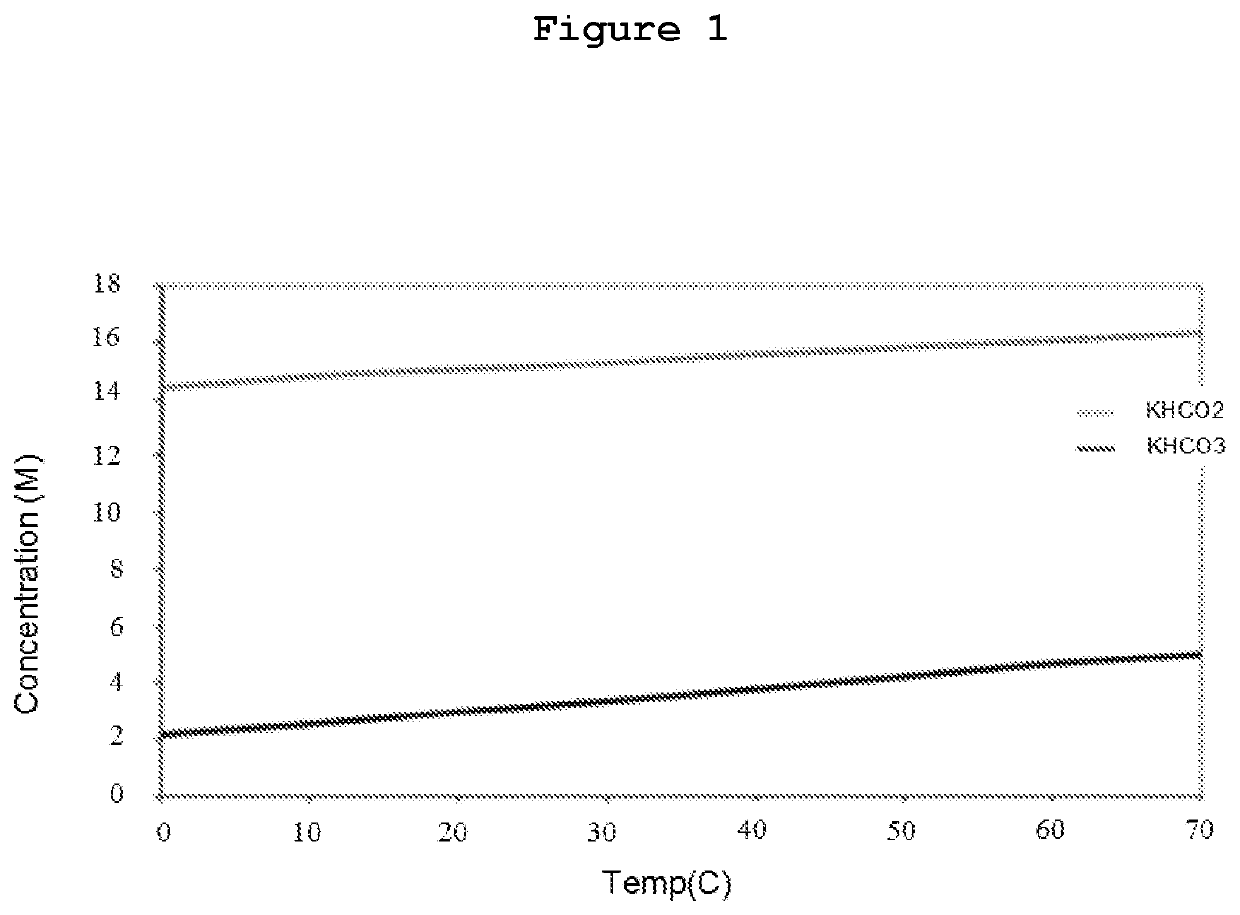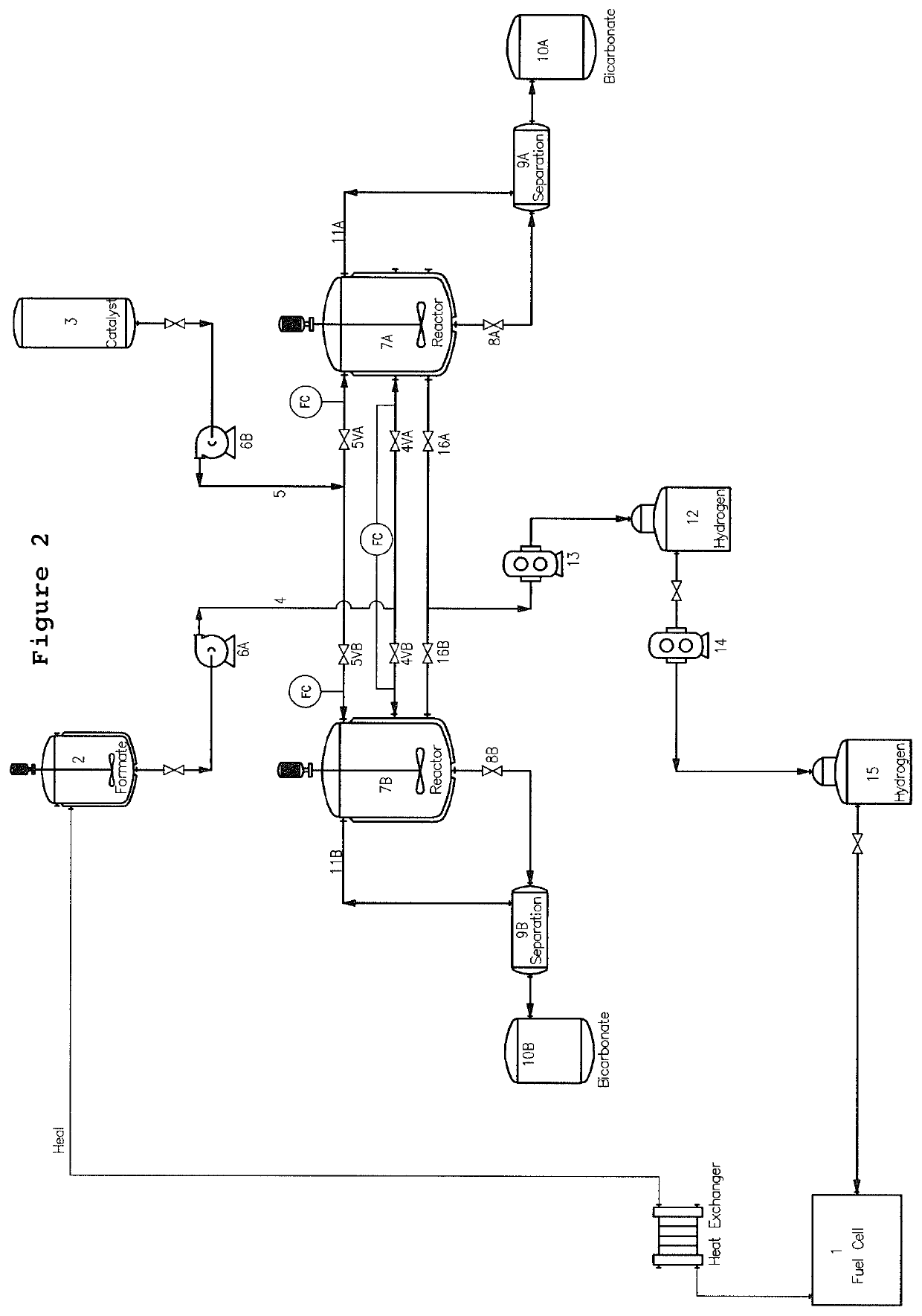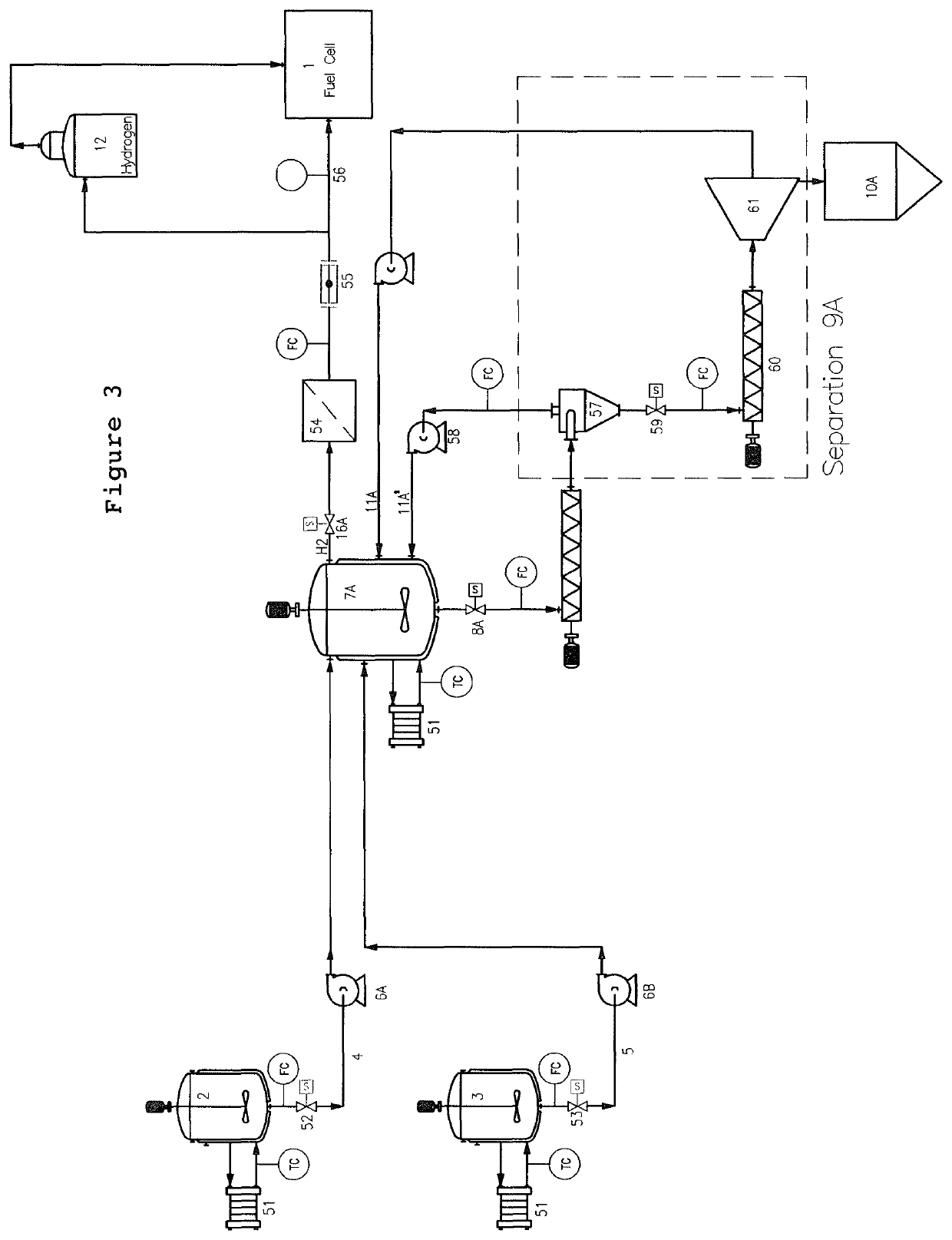Methods and devices for storage and release of hydrogen
a technology of hydrogen storage and hydrogen storage, applied in the direction of electrochemical generators, chemical apparatus and processes, chemical/physical processes, etc., can solve the problems of unmanageable reaction mass, unfavorable use of catalysts, and inability to easily separate solid catalysts such as palladium on carbon from bicarbonate slurry
- Summary
- Abstract
- Description
- Claims
- Application Information
AI Technical Summary
Benefits of technology
Problems solved by technology
Method used
Image
Examples
preparation 1
[{RuCl2 (cymene)}2]
[0103]A solution of hydrated ruthenium trichloride (2 g, approx. 7.7 mole) in 100 mL ethanol is treated with 10 mL α-phellandrene and heated under reflux in a 150-mL, round-bottomed flask for 4 hours under nitrogen atmosphere. The solution is allowed to cool to room temperature, and the red-brown, microcrystalline product is filtered off. Additional product is obtained by evaporating the orange-yellow filtrate under reduced pressure to approximately half-volume and refrigerating overnight.
preparation 2
Supported Palladium Catalyst
[0104]Palladium (II) nitrate dihydrate (0.096 mmol, Sigma 76070) was dissolved in water (1 L). Activated carbon (Sigma C-3345) was heated to 200° C. for 1 hour. The treated activated carbon (25 g in order to get 0.4% Pd / C) was added into the palladium solution and stirring was activated to 700 rpm for 1 hour. Then an aqueous solution of potassium formate (0.081 g in 200 ml of water) that was used as a reduction agent was added dropwise for 30 minutes at 25° C. (molar ratio between palladium and reduction agent is 10:1, total concentration of formate in the vessel was 0.008M). Following that the mixture was left while stirring continued at room temperature for 24 hours. After 24 hours the mixture was filtered, washed thoroughly with deionized water and left to dry at room temperature.
examples 1-7
Dehydrogenation of Aqueous Potassium Formate with the Aid of Ruthenium Catalyst Precursor and Phosphorous Ligand Dissolved in a Single Organic Solvent
[0105]Dppm in an organic solvent was heated at 60° C. during 15 min, followed by the addition of aqueous potassium formate solution with a concentration 15.7 M. The ruthenium source, [{RuCl2(cymene)}2] commercially available from Sigma, was introduced into the reaction mixture at 60° C. The reaction mixture was stirred with a magnetic stirrer (1500 rpm). Gas evolution then started, and the gas was collected with an automatic gas burette. At the end of the reaction, the organic phase was separated easily from the bicarbonate slurry.
[0106]The experimental details [organic solvent used, volume of organic solvent (Vsolvent), volume of KHCO2 solution (VKHCO2) and number of moles of ruthenium metal source added (nRu); the molar ratio Ru:DPPM was 1:3 in all of these examples] are set out in Table 1, along with the performance of the catalyst ...
PUM
| Property | Measurement | Unit |
|---|---|---|
| temperature | aaaaa | aaaaa |
| temperature | aaaaa | aaaaa |
| temperature | aaaaa | aaaaa |
Abstract
Description
Claims
Application Information
 Login to View More
Login to View More - R&D
- Intellectual Property
- Life Sciences
- Materials
- Tech Scout
- Unparalleled Data Quality
- Higher Quality Content
- 60% Fewer Hallucinations
Browse by: Latest US Patents, China's latest patents, Technical Efficacy Thesaurus, Application Domain, Technology Topic, Popular Technical Reports.
© 2025 PatSnap. All rights reserved.Legal|Privacy policy|Modern Slavery Act Transparency Statement|Sitemap|About US| Contact US: help@patsnap.com



